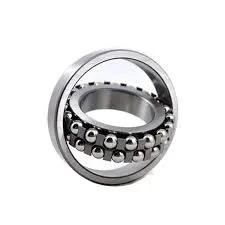
Nov . 21, 2024 21:19 Back to list
deep groove ball bearing types
Understanding Deep Groove Ball Bearing Types
Deep groove ball bearings are among the most commonly used types of bearings in various applications, ranging from household appliances to high-performance machinery. They are characterized by their simple design, versatility, and ability to accommodate radial and axial loads. In this article, we will explore the key features, types, applications, and advantages of deep groove ball bearings.
Key Features of Deep Groove Ball Bearings
The primary feature of deep groove ball bearings is their raceway geometry, which allows for high-speed operation and reduced friction. They consist of an inner and outer ring with a deep raceway, a cage, and ball rolling elements. The deep grooves provide the bearing with the capacity to handle both radial and axial loads, making it suitable for a wide range of operational conditions. This versatility is further enhanced by the availability of various materials, including steel, ceramic, and plastic.
Types of Deep Groove Ball Bearings
1. Single Row Deep Groove Ball Bearings These are the most common type and contain a single row of balls. They are ideal for applications where space is limited and are designed to handle moderate radial and axial loads.
2. Double Row Deep Groove Ball Bearings As the name suggests, these bearings consist of two rows of balls, allowing them to carry heavier loads compared to single row bearings. They are suitable for applications that require high radial load capacity and are commonly used in industrial machinery.
3. Angular Contact Ball Bearings Although primarily categorized as a different type, angular contact bearings also fall under the deep groove category when considering their construction. They are designed to handle high axial loads in one direction and are frequently used in critical applications such as machine tools and automotive systems.
4. Sealed and Shielded Bearings Deep groove ball bearings can come with seals or shields to protect them from contamination and to retain lubrication. Sealed bearings are ideal for environments where dust and moisture are a concern, whereas shielded bearings provide a moderate level of protection and facilitate easier maintenance.
deep groove ball bearing types

5. High-Speed Bearings These specialized deep groove ball bearings are designed for applications requiring higher rotational speeds. They are often made from advanced materials with optimized designs to minimize heat generation and enhance performance.
Applications of Deep Groove Ball Bearings
Deep groove ball bearings are ubiquitous in various sectors. They are commonly found in
- Automotive Applications Used in engines, transmissions, and wheel hubs. - Industrial Machinery Employed in gearboxes, pumps, and conveyor systems. - Household Appliances Found in washing machines, refrigerators, and electric motors. - Electronics Used in computer cooling fans, hard drives, and robotics.
Given their wide-ranging applicability, deep groove ball bearings are integral components in maintaining the efficiency and reliability of numerous mechanical systems.
Advantages of Deep Groove Ball Bearings
- Versatility Capable of handling both radial and axial loads, making them suitable for a variety of applications. - Reduced Friction The design allows for smooth operation, which helps prolong the lifespan of both the bearings and the machinery they support. - Cost-Effectiveness Deep groove ball bearings are relatively inexpensive to manufacture, making them a cost-effective choice for many applications. - Self-Alignment While these bearings are not typically self-aligning, their design can tolerate some misalignment, reducing the risk of premature wear.
Conclusion
Deep groove ball bearings are an essential component in the modern mechanical landscape. Their ability to handle diverse loads, combined with a range of available designs to suit specific needs, makes them a go-to choice for engineers and manufacturers alike. As technology progresses, the demand for high-performance deep groove ball bearings continues to grow, promising further innovations in their design and application. Whether in everyday appliances or advanced industrial machines, these bearings play a crucial role in ensuring smooth and efficient operations.
Latest news
-
Premium Deep Groove Ball Bearings | High Speed & Reliability
NewsAug.29,2025
-
Durable Scaffolding Clamps - Secure & Reliable Tube Connectors
NewsAug.28,2025
-
Common Failures in Thrust Ball Bearings and Solutions
NewsAug.22,2025
-
How Tapered Roller Bearings Can Take Shock Loads
NewsAug.22,2025
-
Angular Bearings in High-Precision Spindles
NewsAug.22,2025
-
The Impact of Misalignment on Cylindrical Roller Bearing Performance
NewsAug.22,2025
